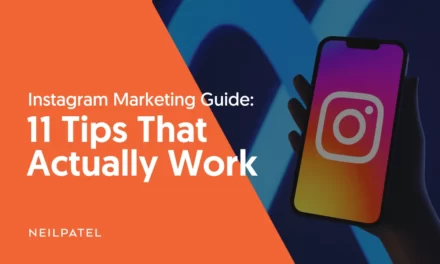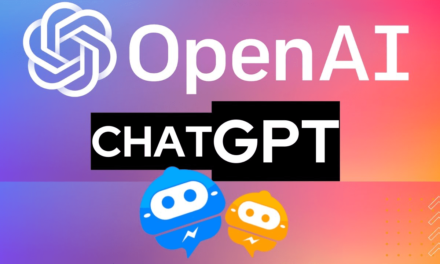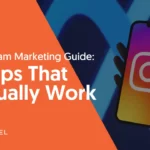
The Power of Influencer Marketing: Boost Your Brand’s Reach and Engagement
In today’s digital age, traditional advertising methods alone may not be enough to capture the attention and trust of your target audience. Consumers are increasingly turning to influencers for recommendations and advice before making purchasing decisions. This is where influencer marketing comes into play—a powerful strategy that can help your brand expand its reach, increase engagement, and drive conversions. In this blog post, we’ll explore the ins and outs of influencer marketing and provide you with practical tips to develop an effective strategy.
What is Influencer Marketing?
Influencer marketing is a collaboration between brands and influential individuals or content creators who have a dedicated following. These influencers, often recognized as industry experts, bloggers, or social media personalities, possess the power to influence their audience’s opinions and buying decisions. By leveraging their reach and credibility, brands can tap into new markets, gain exposure, and build trust with potential customers.
Why Invest in Influencer Marketing?
Influencer marketing offers several advantages over traditional advertising:
- Authenticity and Trust: Influencers have built strong relationships with their followers, and their recommendations are seen as genuine and trustworthy. By partnering with influencers, your brand can tap into this authenticity and establish credibility with their audience.
- Targeted Reach: Influencers often have a specific niche or demographic they cater to. This allows you to precisely target your desired audience and connect with potential customers who are genuinely interested in your products or services.
- Increased Engagement: Influencers have a highly engaged following that actively interacts with their content. When influencers promote your brand, their audience is more likely to engage, share, and comment on your content, thereby increasing brand visibility and awareness.
- Boosted SEO: Collaborating with influencers can result in valuable backlinks from their websites or social media profiles. These backlinks contribute to your SEO efforts, improving your search engine rankings and driving organic traffic to your website.
Developing Your Influencer Marketing Strategy
To make the most of influencer marketing, follow these essential steps:
1. Set Clear Objectives: Define your goals for the influencer campaign. Do you want to increase brand awareness, drive traffic, or boost sales? Setting specific objectives will help you measure the success of your efforts.
2. Identify the Right Influencers: Research and identify influencers who align with your brand values, target audience, and niche. Look at their content, engagement rates, and audience demographics to ensure they can effectively reach your desired customer base.
3. Establish Collaboration Opportunities: Determine how you want to collaborate with influencers. Whether it’s through sponsored content, product reviews, or social media takeovers, choose collaboration opportunities that align with your campaign goals and the influencers’ strengths.
4. Clear Communication and Guidelines: Clearly communicate your expectations, guidelines, and key messages to the influencers. Provide them with relevant information about your brand, products, or services, while also allowing them creative freedom to maintain their authenticity and connection with their audience.
5. Compensation and Contracts: Discuss compensation with the influencers, whether it’s through monetary payment, free products, or affiliate commissions. Ensure you have written agreements or contracts in place to outline deliverables, timelines, exclusivity, and any other legal aspects.
6. Track and Measure Results: Monitor the performance of your influencer marketing campaigns. Track metrics such as engagement rates, reach, website traffic, and conversions attributed to the influencer collaboration. Use analytics tools to measure the impact and adjust your strategy accordingly.
Building Long-Term Relationships
Building long-term relationships with influencers is a key aspect of successful influencer marketing. Here’s how you can nurture these relationships:
- Engage and Appreciate: Show genuine interest in the influencers’ content by engaging with their posts, leaving thoughtful comments, and sharing their work. Express your appreciation for their collaboration and the value they bring to your brand.
- Offer Exclusivity: Provide influencers with exclusive access to your new products, events, or behind-the-scenes experiences. This not only strengthens your relationship but also incentivizes them to create unique and engaging content for their audience.
- Collaborate on Multiple Campaigns: Instead of one-off collaborations, consider working with influencers on multiple campaigns or long-term partnerships. This allows them to develop a deeper understanding of your brand and build stronger connections with their audience over time.
- Share Influencers’ Content: Extend your support to influencers by sharing their content on your brand’s social media platforms or website. This reciprocity can help strengthen your relationship and boost their exposure as well.
- Provide Valuable Resources: Offer influencers additional resources such as exclusive industry insights, research findings, or early access to relevant data. This demonstrates your commitment to their success and reinforces the value of your partnership.
- Attend Industry Events: Attend industry conferences, networking events, or trade shows where you can meet influencers in person. Face-to-face interactions can foster stronger connections and open up new collaboration opportunities.
- Seek Feedback: Regularly seek feedback from influencers on their experience working with your brand. Listen to their suggestions and incorporate their insights into future campaigns. This collaborative approach strengthens your partnership and ensures mutual growth.
Evaluating and Refining Your Strategy
As with any marketing strategy, it’s crucial to evaluate the effectiveness of your influencer marketing efforts and make necessary adjustments. Here are some steps to follow:
- Analyze Key Metrics: Continuously track and analyze the performance metrics of your influencer campaigns. Look at engagement rates, click-through rates, conversions, and ROI. Identify which influencers and collaboration types are generating the best results.
- Learn from Insights: Gather insights from influencer-generated content and audience feedback. Understand what resonates with their audience and adapt your messaging or content strategy accordingly. This iterative approach helps optimize future campaigns.
- Stay Updated: Stay abreast of trends, new platforms, and evolving influencer marketing strategies. The landscape is ever-changing, and being proactive in adapting to new developments will keep your campaigns fresh and effective.
- Test and Experiment: Don’t be afraid to test new approaches or experiment with different influencer types or platforms. Testing can help you uncover untapped opportunities and find the optimal mix for your brand.
- Build a Diverse Portfolio: Consider collaborating with influencers of different sizes, from macro-influencers to micro-influencers. Each category offers unique benefits and can reach distinct audience segments. Diversifying your portfolio minimizes reliance on a single influencer or channel.
- Iterate and Improve: Continuously refine your influencer marketing strategy based on data-driven insights and industry best practices. Success in influencer marketing often comes from refining your approach over time and building on past successes.
Conclusion
Influencer marketing has become an essential tool for brands to connect with their target audience authentically. By partnering with influencers who align with your brand values and have a genuine connection with their followers, you can expand your reach, increase engagement, and drive conversions. Remember, building long-term relationships, tracking results, and refining your strategy are the keys to successful influencer marketing. Embrace the power of influencers and harness their influence to propel your brand forward in the
FAQs
What is the difference between a macro-influencer and a micro-influencer?
Macro-influencers have a large following, typically exceeding 100,000 followers, and often have a more generalized audience. Micro-influencers, on the other hand, have a smaller but more engaged following within a specific niche or community. They usually have between 1,000 to 100,000 followers. The choice between macro and micro-influencers depends on your campaign objectives, target audience, and budget.
How do I find the right influencers for my brand?
Finding the right influencers involves research and analysis. Start by identifying influencers within your industry or niche. Look for those whose values align with your brand, have an engaged audience, and produce high-quality content. Utilize influencer marketing platforms, social media searches, and tools like BuzzSumo or Traackr to discover relevant influencers and assess their reach and credibility.
How much should I pay influencers?
Influencer fees vary depending on factors such as their reach, engagement rates, industry, and the scope of the campaign. Pricing models can include flat fees, cost per post, or commission-based structures. Research industry benchmarks, negotiate based on the influencer’s value and your budget, and consider offering a combination of monetary compensation, free products, or exclusive experiences.
How can I ensure authenticity in influencer collaborations?
Maintaining authenticity is vital for successful influencer marketing. Firstly, choose influencers whose content, values, and style align with your brand. Allow influencers creative freedom while clearly communicating your brand guidelines and objectives. Encourage genuine reviews and authentic storytelling rather than scripted endorsements. Building long-term relationships with influencers also fosters trust and authenticity over time.
How do I measure the success of influencer marketing campaigns?
To measure the success of influencer marketing campaigns, track key performance indicators (KPIs) such as engagement rates, reach, website traffic, conversions, or sales attributed to the influencer collaboration. Use analytics tools, campaign-specific URLs, and unique discount codes to monitor performance. Compare the results against your predefined campaign goals to evaluate effectiveness and inform future strategies.
Are there any legal considerations in influencer marketing?
Yes, there are legal considerations in influencer marketing. Disclosures and transparency are essential to comply with regulations, such as those set by the Federal Trade Commission (FTC) in the United States. Influencers must clearly disclose sponsored content or partnerships using hashtags like #ad, #sponsored, or #partner. Ensure influencers understand these guidelines, and incorporate them into your collaboration agreements and content approvals.
Can influencer marketing work for B2B brands?
Absolutely! While influencer marketing is commonly associated with B2C brands, it can be effective for B2B brands as well. Identify influencers within your industry or niche who have authority, expertise, and credibility. Collaborate on thought leadership content, webinars, case studies, or co-created content to reach and engage your target audience within the B2B space.
Is it better to work with a few influencers or many?
The choice between working with a few influencers or many depends on your campaign objectives, target audience, and available resources. Working with a few influencers allows for deeper, more focused collaborations and allows you to build stronger relationships. On the other hand, collaborating with multiple influencers can help broaden your reach, tap into diverse audience segments, and increase overall exposure.






























Recent Comments